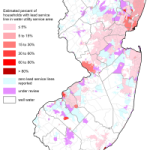New Jersey Future Blog
A Housing Dilemma
June 5th, 2003 by Tim Evans
- On June 9, state senators on the Community and Urban Affairs Committee will consider legislation that would allow municipalities to transfer up to 75 percent of their fair share obligation of affordable housing to another community.
- Today municipalities can transfer up to 50 percent of their fair share to another community, at an average payment of about $25,000 per unit.
- “Sending” communities are typically much more prosperous than “receiving” communities under these Regional Contribution Agreements. As example: Parsippany-Troy Hills sends a portion of its affordable housing obligation to Newark by payment, even though Newark has four times the unemployment rate and experienced a 5 percent loss of private sector jobs throughout the 1990s, compared with a 32 percent job gain for Parsippany-Troy Hills.
- The dilemma: poorer communities are helped in the short term by the infusion of money for housing; but the region and state are hurt in the long term by the concentration of poverty in some communities, a shortage of housing that’s affordable in others, and the increasing isolation of lower-income households from new job opportunities.
SMART GROWTH NOT SMART WITHOUT HOUSING FOR ALL
New Jersey is the only state with a statewide affordable housing policy, created in response to the State Supreme Court’s “Mount Laurel” rulings, which found it was the constitutional obligation of every municipality to provide its fair share of affordable housing.
The reality is quite different. More than half of New Jersey’s affordable housing is offered in only 12 communities: Newark, Jersey City, Camden, Trenton, Atlantic City, Paterson, Hoboken, East Orange, Elizabeth, West New York, Orange and North Bergen. Nearly half of all municipalities (256) list no affordable units at all.
Regional Contribution Agreements work against the fair share goal, despite their real short-term benefits to receiving communities. New state laws and housing policies are needed that emphasize New Jersey’s long-term prosperity by considering the good of the region, and the state, as a whole.
If done properly, the creation of more widespread affordable housing will also advance the state’s smart growth goals, because it would (1) lead to more compact, less-sprawling growth, since most affordable housing consists of multi-family or attached units, (2) reduce traffic congestion, since low-wage workers would have less travel to their jobs, and (3) promote more mixed-use development, since multi-family units can more easily be co-located with retail and office uses.
















